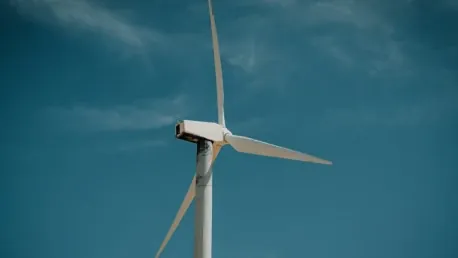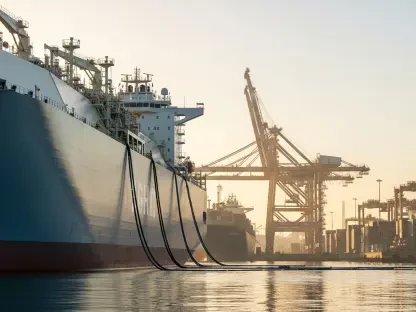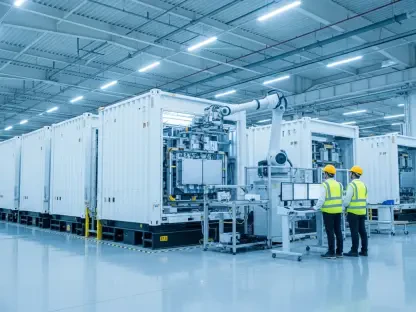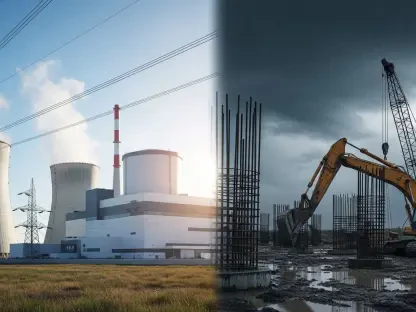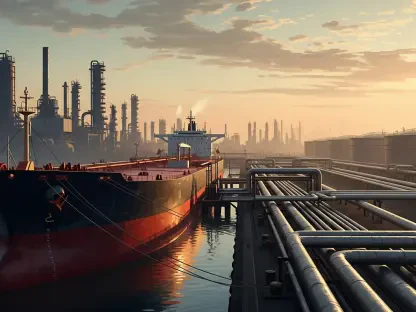In a move that has sparked a wave of uncertainty and discussion among renewable energy advocates, former President Trump recently issued an Executive Order that pauses the development of offshore wind energy projects. The order halts new lease sale auctions on the Outer Continental Shelf and puts a six-month freeze on numerous approvals for ongoing projects, including construction permitting and environmental assessments managed by the Department of the Interior. This decision follows Trump’s promises during the 2024 Presidential campaign, positioning it as a key action in his administration’s energy policy. While existing projects like Vineyard Wind 1, Dominion Energy’s Coastal Virginia Offshore Wind (CVOW), and Empire Wind 1, which are already under construction and have obtained necessary approvals, are not expected to be impacted, the order introduces a level of uncertainty for about 10.5 gigawatts (GW) of projects that have secured permits but have yet to reach final investment decisions. Moreover, this halt means that the remaining 25 GW of early-stage projects are unlikely to make any headway under the current administration.
Comprehensive Assessment and Review
A key component of the Executive Order is a comprehensive assessment and review of federal wind leasing and permitting practices, led by the Secretary of the Interior in consultation with several other government officials and agencies. This review aims to scrutinize existing practices and ensure they align with the administration’s energy policy goals. Analysts from Rystad Energy have pointed out that this decision could immediately impact the investment climate, highlighting the complex and time-consuming nature of offshore wind development. This thorough reassessment could have far-reaching implications for both current and future projects, potentially creating a more challenging environment for developers. The decision to halt the approval process reflects an overarching trend of regulatory reevaluation and risk management amidst an investment climate that analysts have described as increasingly unfriendly toward renewable energy projects. The administration’s focus on fossil fuels and traditional energy sources appears to be in stark contrast to the previous administration’s push toward renewable energy.
Alongside the review, the pause on permits and lease sales could set a precedent for future administrations to reassess their stance on renewable energy projects. This could either slow down or entirely change the trajectory of the U.S. offshore wind sector, which has been striving to catch up with Europe and Asia in terms of installed capacity and technological advancement. By putting existing projects under scrutiny and halting new developments, there is a risk of discouraging investment and innovation within the sector. The administration’s move signals a clear shift in federal priorities and could influence how future policies are shaped concerning offshore wind energy developments. Although this review period is set for six months, the lasting impacts might extend much further, potentially reshaping the landscape of renewable energy in the United States.
Potential Risks and Industry Impact
This Executive Order has introduced moderate risk levels for projects already in the pipeline. Approximately 10.5 GW of projects have obtained permits but are yet to finalize their investment decisions, leading to heightened uncertainty for developers and investors alike. The lengthy and intricate nature of offshore wind projects means that delays and freezes, even for a few months, could have significant financial ramifications. Investors might now perceive these projects as riskier ventures, potentially leading to higher costs or delays in future financing. The order’s impact on early-stage projects is even more profound, with an estimated 25 GW of projects likely seeing no progress under this administration. These projects, which are in their initial planning and development stages, face a nearly insurmountable barrier to advancement given the current federal stance. This poses a significant challenge for the industry as it seeks to expand and innovate within the renewable energy space.
Furthermore, the halt could also affect the broader goals of states that have set ambitious offshore wind targets. States like New York, New Jersey, and Massachusetts have been aggressively pursuing offshore wind energy to meet their renewable energy goals and reduce carbon emissions. With federal support waning, these states might face difficulties in meeting their targets, potentially slowing down the overall transition to renewable energy sources. This situation underscores the complexity of aligning federal and state policies in the pursuit of renewable energy goals. As the industry grapples with these new challenges, it must also navigate the broader context of international competition, where other countries are rapidly advancing their offshore wind capabilities. The ripple effects of this decision could extend beyond U.S. borders, impacting global investment trends in renewable energy.
Future of Offshore Wind Energy in the U.S.
In a move stirring uncertainty among renewable energy advocates, former President Trump has issued an Executive Order pausing the development of offshore wind energy projects. This directive suspends new lease sale auctions on the Outer Continental Shelf and enforces a six-month freeze on multiple approvals for ongoing projects, including construction permits and environmental reviews overseen by the Department of the Interior. The action aligns with Trump’s promises during his 2024 Presidential campaign, marking it as a significant aspect of his administration’s energy policy. Although current projects like Vineyard Wind 1, Dominion Energy’s Coastal Virginia Offshore Wind (CVOW), and Empire Wind 1—already under construction with necessary approvals—should remain unaffected, the order casts a shadow of uncertainty over around 10.5 gigawatts (GW) of projects with permits awaiting final investment decisions. Additionally, the halt implies that the remaining 25 GW of early-stage projects are unlikely to progress under the existing administration.
